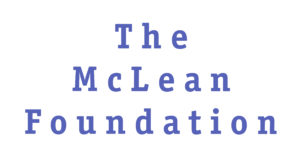1.0 Introduction
Shared Stewardship Toolkit
The National Trust for Canada regularly receives inquiries from owners, operators and community groups who are grappling with decisions about the stewardship of the historic sites under care of multiple partners. At the heart of the issue, is how to navigate and continuously refresh these partnerships to best support a historic site’s long-term stewardship.
Over the winter of 2021, the Trust undertook a research project to better understand the challenges facing these sites and learn how partners are working together to resolve them. The research included a national survey and over 40 interviews with owners, operators, and community partners. Better Together: A Research Report on Partnerships at Historic Sites presents the methodology and results of the research, and this Shared Stewardship Toolkit presents recommendations in a format that will be useful for all partners.
The research focused primarily on historic sites whose history is being actively interpreted for the public, and that are owned by public agencies. The Trust recognizes that those responsible for other types of historic places are also facing challenges, but the specific nature of actively interpreted historic sites has key implications for the relationship between partners.
The main conclusion of the Trust’s research is that very few sites can rely on a single entity to ensure its stewardship because no one group has all the necessary mandates, resources and competencies required for success. Partnerships have emerged as being critical to the stewardship of these sites – where “success” is measured by their ongoing community relevance, protection of heritage features, and financial sustainability. But with partnerships come challenges, and the best practices for establishing and maintaining these partnerships are not widely shared or understood.
The Shared Stewardship Toolkit is structured around the main topics that our research revealed as the key challenges for historic site partnerships.
Section 2 introduces the different types of Places, Players, and Partnerships involved in historic site stewardship. The typologies of geography and physical complexity are defined, as are the various types of owners, operators, and third parties. Typical partnerships are explored in the context of shared stewardship with consideration of alternative and emerging approaches.
Section 3 presents the best practices that partners can implement in responding to the challenges they face. Each thematic topic outlines those challenges under the heading ‘What We Heard’, presents the best practices being applied by owners, operators and third-party partners, and offers links to relevant resources. Section 4 presents case studies that illustrate how best practices are in use at specific historic sites from across the country.
While focussed on historic sites where the primary activity is the interpretation of the site’s history, the principles and specific recommendations contained in this Toolkit are applicable to a broader range of historic places, including those that house non-profit organizations, operate social enterprises or house cultural or social services. This Toolkit also complements the other resources on the Trust’s Regeneration Works website, including the Marketing and Endangered Places Toolkits, and tip sheets and case studies on fundraising, revenue generation, place of faith revitalization, and more.
The Trust would like to thank the individuals that were interviewed and all those that responded to the national survey. A special thank you to Shannon Bateman, who played a central role in this project and the writing of this toolkit.
The creation of this tool kit was made possible by funding from the McLean Foundation and Canadian Heritage and through the generous support of donors.

|

|